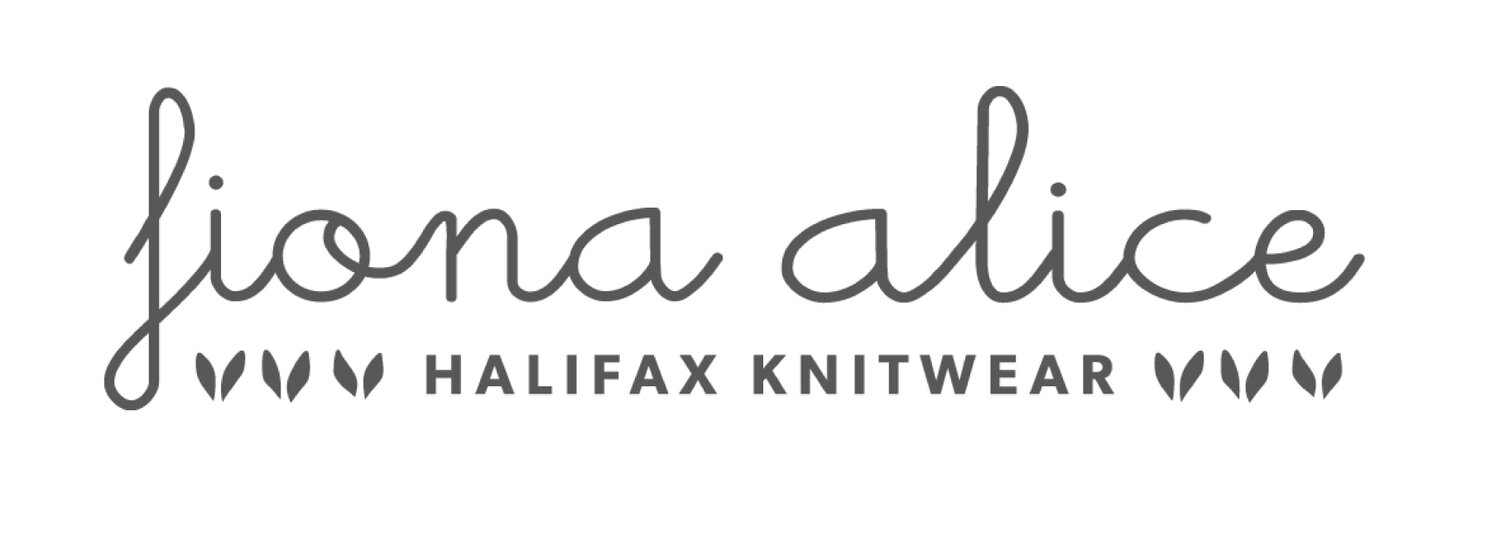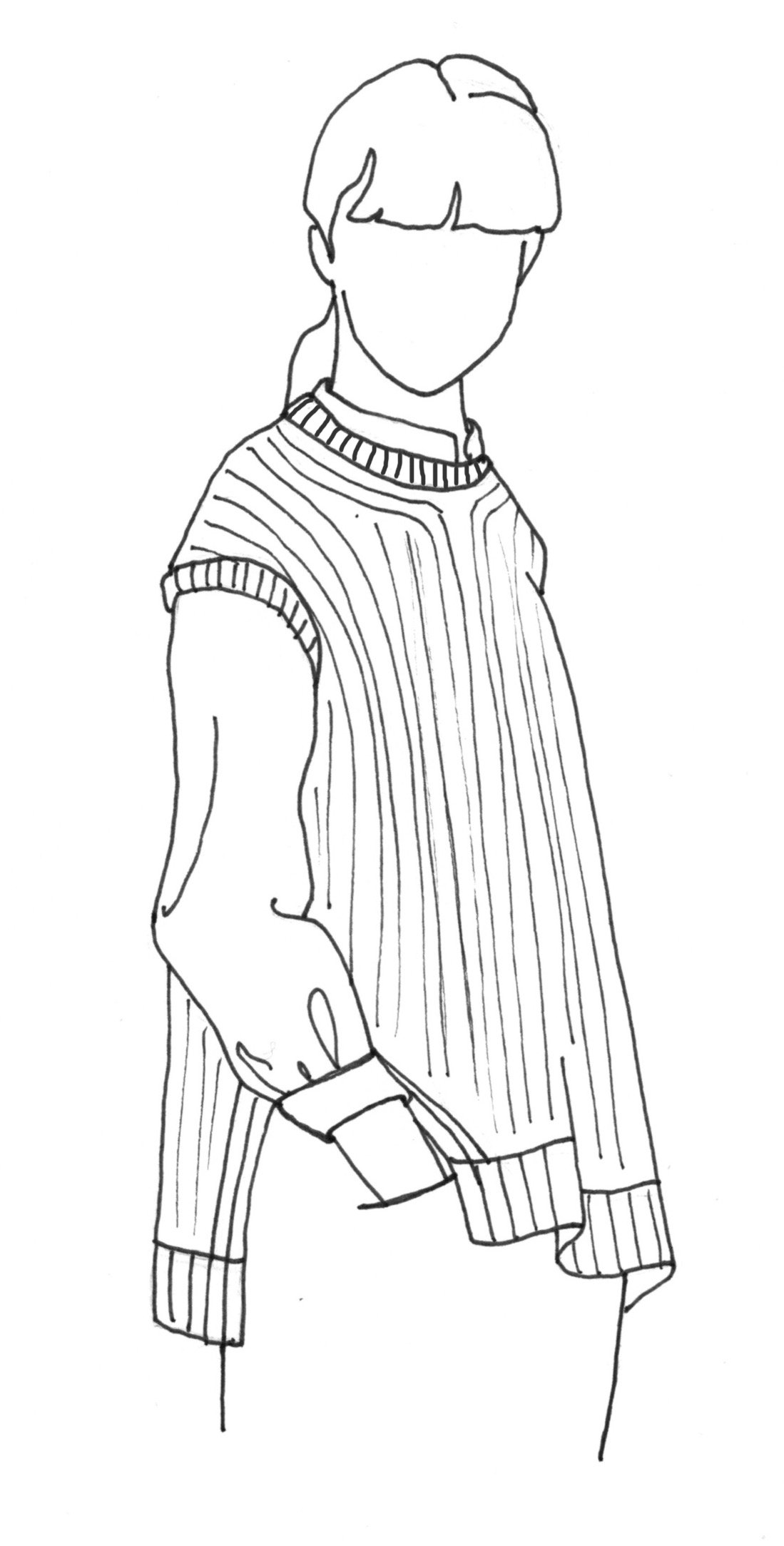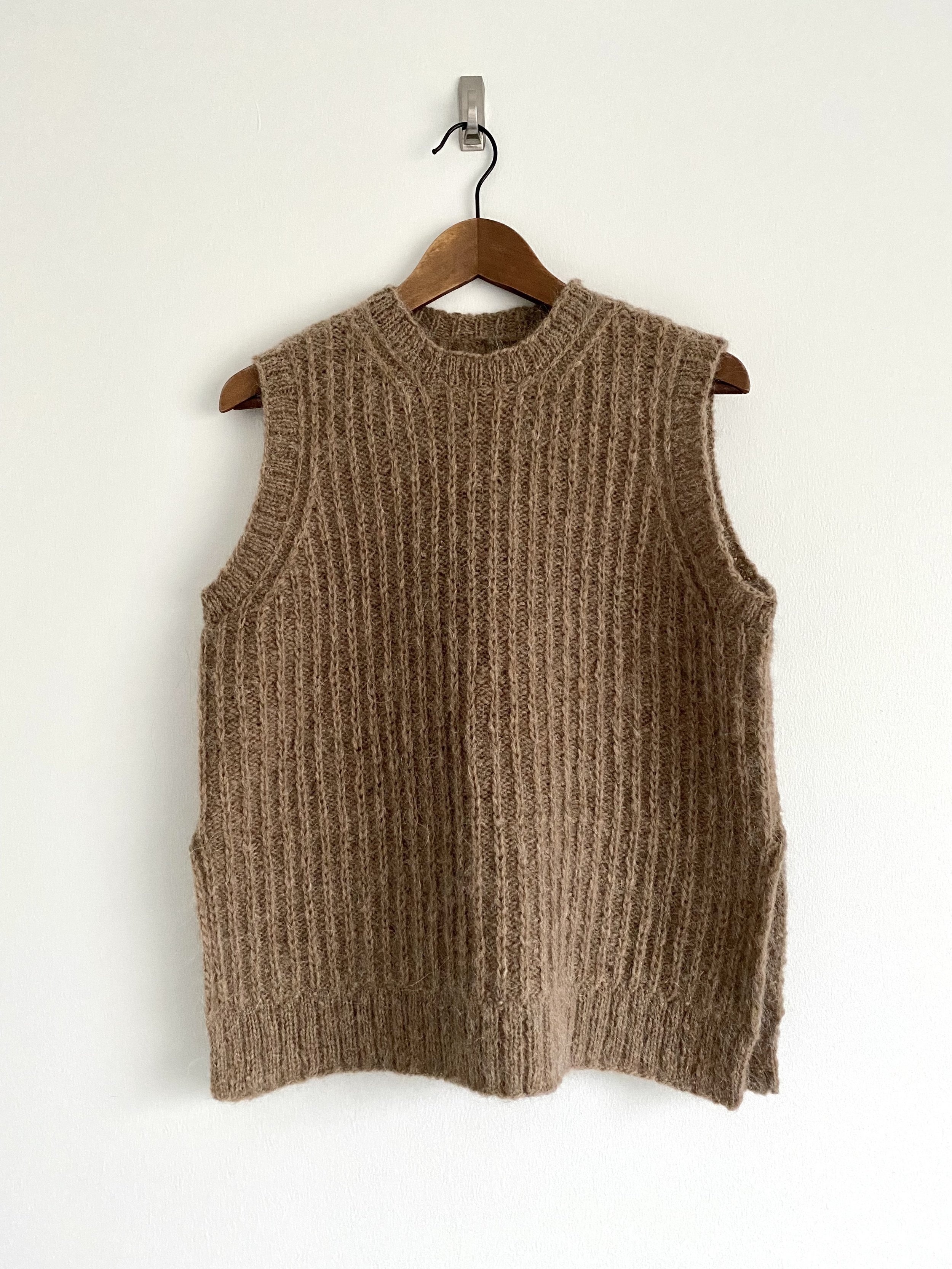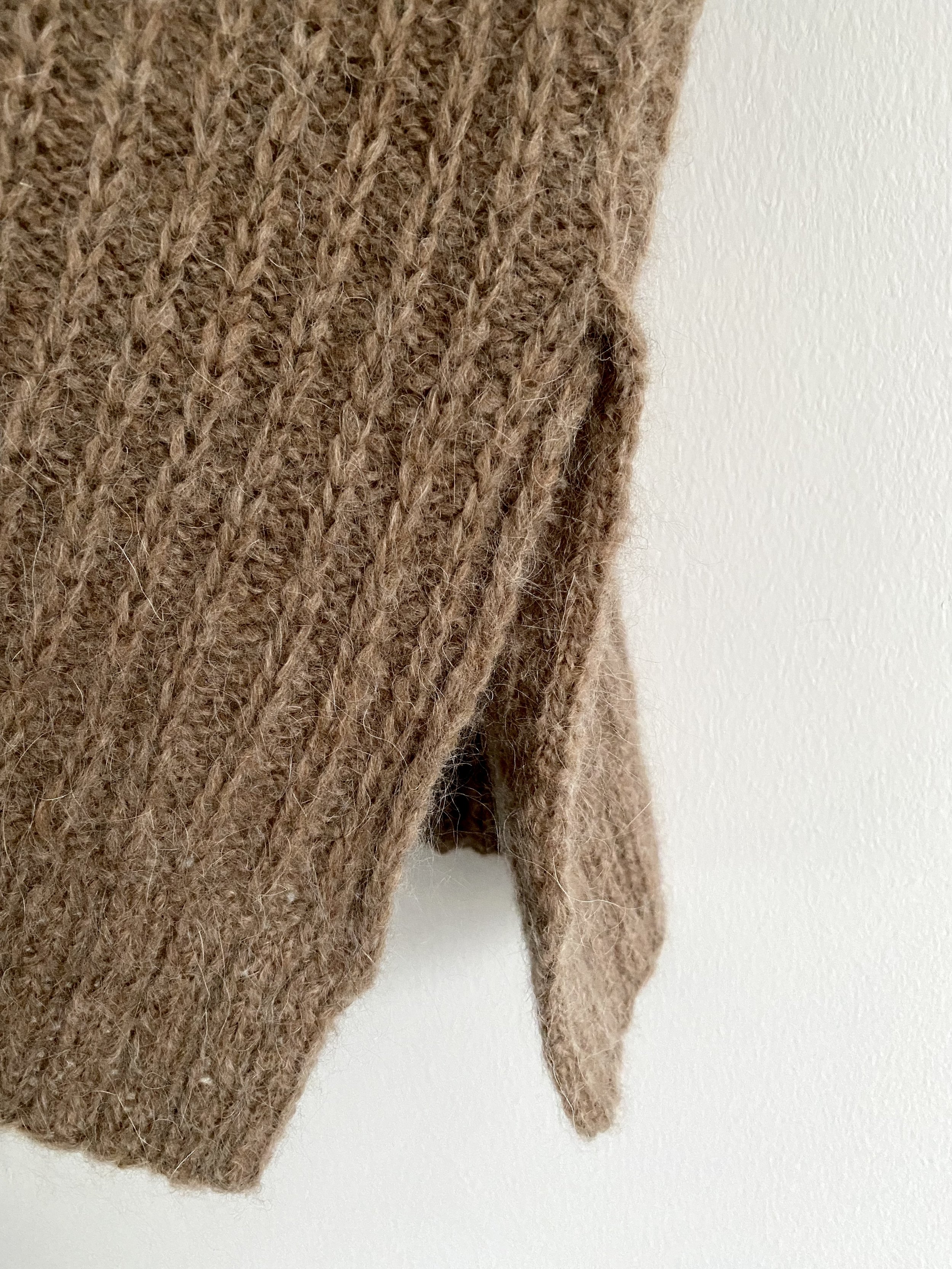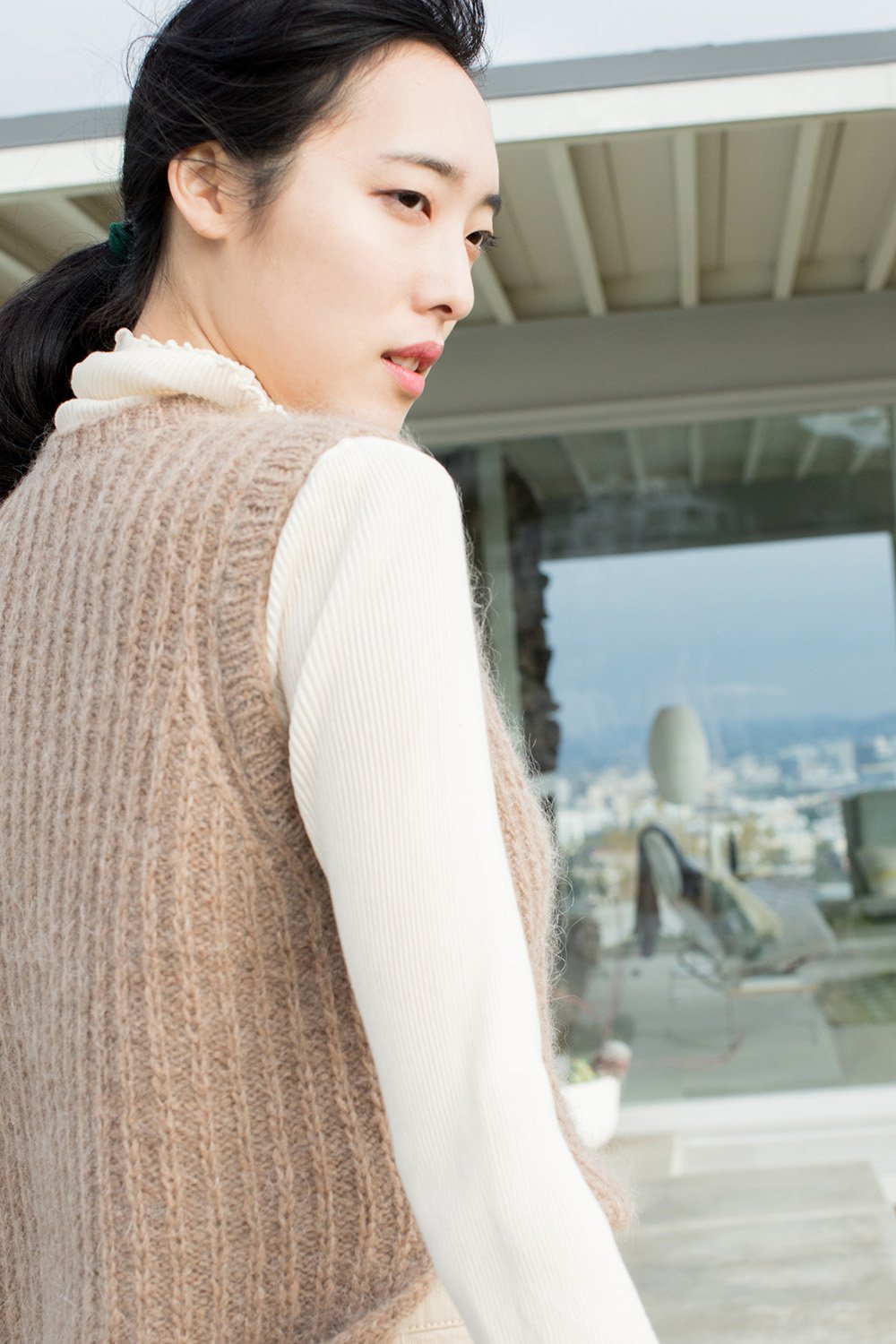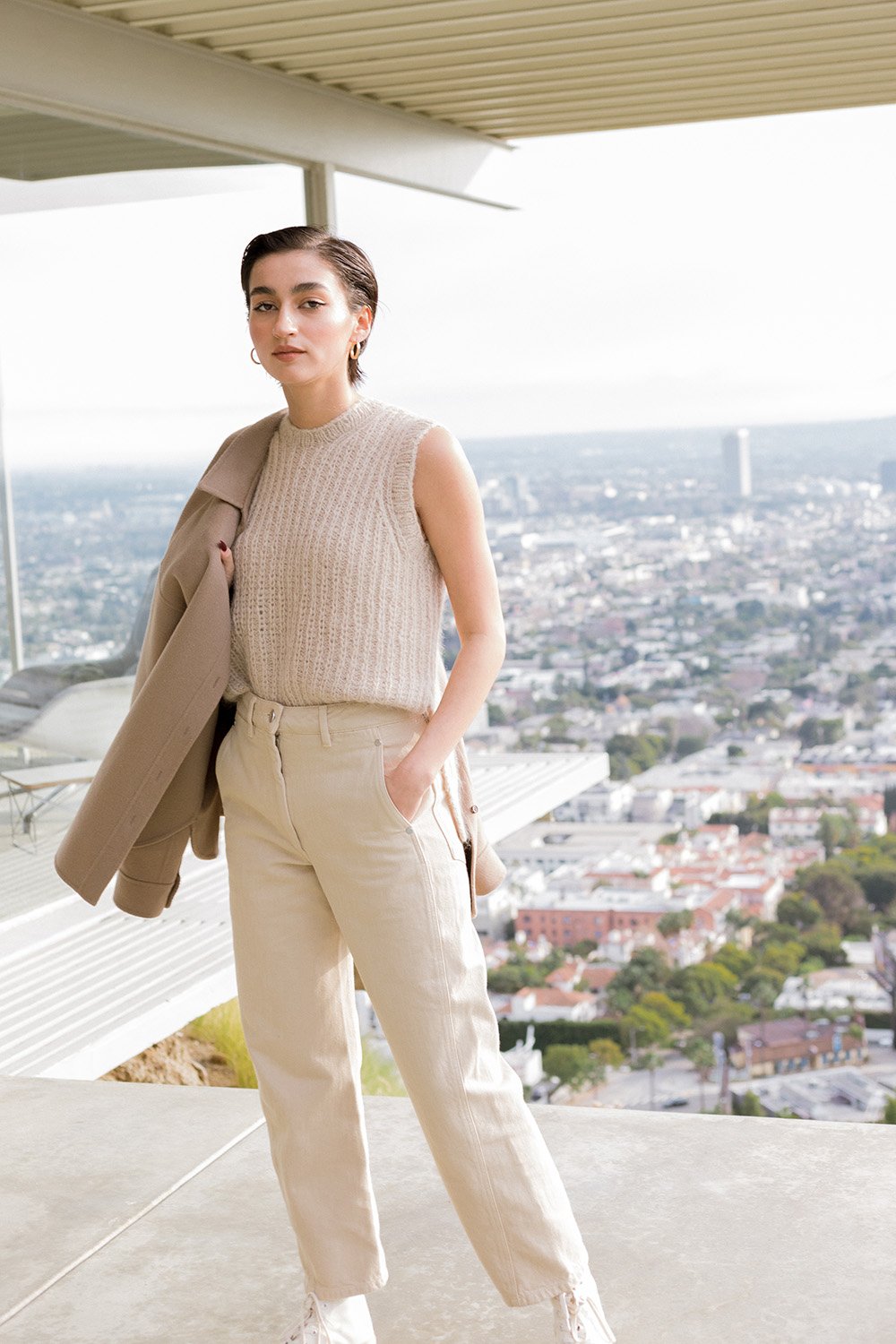Looking back at my blogging habits, I’ve noticed that I tend to go on hiatus around January and don’t resurface until the spring. I probably post in January thinking this year will be the year I write consistently on the blog. However, after one post, the New Year’s resolution dissolves and I don’t emerge until months later. I thought I’d be slightly embarrassed when I noticed this pattern but I’m trying not to put so much pressure on myself. Often the pressure of feeling like I need to post keeps me from do that very thing. So instead, I’m posting when it feels right. I’m still here and still knitting.
One of the reasons I’ve been tempted back to blogging is to introduce my latest pattern with Woolfolk. The work that the Woolfolk team has put into this collection is just too good not to share. I’ve always loved their minimalistic look but this recent photoshoot and hazy views of Los Angeles has me dreaming about travel. This past autumn, I started to work on a simple ribbed vest for Woolfolk with their new blend called, Tage.
Image of Tage yarn.
Image of Tage yarn.
Tage is Woolfolk’s latest yarn and was released alongside the Tage Collection which features my new pattern, EJNER. This new yarn, a blend of Woolfolk’s Ultimate Merino wool and mohair, creates a lofty and ethereal fabric. I love most mohair but when working with it I am usually combining a lace weight mohair yarn with another base. However, Tage is one strand and can be used in worsted weight projects. It is unbelievably soft and I would use it again in a heartbeat but like most mohair yarns, it can be a bit tricky to unravel when making changes or fixing mistakes. From Woolfolk’s site, “TÅGE “pronounce as “TU” / In English means “FOG””.
Original swatch for EJNER.
Original swatch for EJNER.
My original swatches above were knit in a DK wool yarn. I didn’t know about Tage at the time when I made this submission. I still think Ejner will look just as lovely in Woolfolk’s smoother yarns, possible Tov or Far. However, I am very pleased with the finished look of Ejner in the new Tage, the simple texture of the ribbing isn’t lost in the fuzz.
Original sketch for EJNER.
Enjer features two different types of ribbing. The first is 2x1 ribbing, a simple knit 2, purl 1 that you’ll see on the hem, neck and armbands. The second is a 1x2 slip stitch ribbing, knit 1, purl 2 , but the knit 1 is slipped on the right side of the fabric. I have a handful of other ideas using this same combination of textures that I hope I can get to in the future.
Image of EJNER on a hanger.
Close up image of the side split on EJNER.
As for the construction, the body is knit from the bottom up and flat at first, creating side slits for added extra room and access to pockets. The front and back are then joined and worked in the round until the armholes are reached. Shaping creates the armholes and neck before seaming the shoulders together with the three-needle bind off method. The neck and armbands are then picked up and worked in the round.
Image of EJNER, in colour no. 22. Photography by Woolfolk.
Image of EJNER, in colour no. 22. Photography by Woolfolk.
This light brown (no.22) vest pictured above and below is the sample that I personally knit. The second sample further down, in a lighter oatmeal colour (no. 21), was knit by the Woolfolk team. I just love both and how Woolfolk styled Ejner two different ways, over long sleeves and without sleeves. I hope this gives you inspiration to knit Ejner and use it as a layering piece in your own wardrobe.
Ejner is available on all of my platforms such as Ravelry, LoveCrafts and in my own shop.
Image of EJNER, in colour no. 22. Photography by Woolfolk.
Don’t forget to check out the whole Tage collection, here. All five pieces were photographed at Stahl House, designed by Pierre Koenig in 1960. Settled up in the Hollywood Hills, the Stahl House has an enchanting view of Los Angeles below.
“Inspired by the iconic Stahl House and the sprawling, aerial views of a gentle mist enveloping the valley below, this collection evokes the intangible characteristics juxtaposing functional modern design while feeling weightless.”
Image of EJNER, in colour no. 21. Photography by Woolfolk.
EJNER DETAILS
SIZES
1 (2, 3, 4, 5, 6) (7, 8, 9, 10, 11)
FINISHED MEASUREMENTS
38.75 (42.75, 46.75, 50.75, 54.75, 58.75) (62.75, 66.75, 70.75, 74.75, 78.75)” bust / chest circumference
Shown in size 1 with +5” and size 2 with +9”
YARN
Woolfolk Tåge 70% Ovis 21 Ultimate Merino® 30% Mohair142 yds per 50 g skein (Worsted Weight)
4 (5, 5, 6, 6, 7) (7, 8, 9, 10, 10) skeins in color no. 21 or 22
NEEDLES AND NOTIONS
US 7 (4.5 mm) 40” circular needle
US 8 (5 mm) 40–60” circular needle
Tapestry needle, 2 markers, waste yarn or stitch holders, spare US 8 (5 mm) needle for three-needle bind off, 2 removable marker, etc
GAUGE
18 sts and 27 rows = 4” in Slip Stitch 1x2 ribbing on larger needles, blocked 18 sts and 24 rows = 4” in 2x1 Ribbing on smaller needles, blocked
NOTES
Vest is knit from the bottom up. The front and back are started separately and worked flat, then joined together and worked in the round to the armhole shaping. The front and back are then worked separately and flat again to the shoulder. Shoulders are seamed together using the three needle bind off method. Stitches are picked up around the armholes and the armbands are finished in the round with ribbing. The neckband is also picked up and worked in the round. Both armbands and neckband are knit with a long circular needle, using the Magic loop method. Choose the size with 4-10” positive ease.
SAMPLES
Sample 1 (size 1, colour no. 21) is on 5’ 7” model.
Sample 2 (size 2, colour no. 22) is on 5’ 10” model.
Image of EJNER, in colour no. 21. Photography by Woolfolk.
Image of EJNER, in colour no. 21. Photography by Woolfolk.
